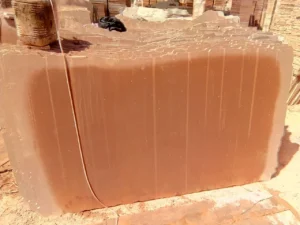When comparing Dholpur stone and Kota stone, each has unique characteristics and applications that make them suitable for different purposes.
Dholpur stone vs kota stone which is better
Kota Stone
- Origin: Kota stone is a fine-grained limestone from the Kota district of Rajasthan, India.
- Characteristics: It’s known for its hard-wearing nature and natural beauty, with rich greenish-blue and brown colors, imparting a unique charm.
- Uses: Extensively used for flooring, wall cladding, pathways, corridors, staircases, and swimming pool decks. It’s also popular in industrial settings like warehouses and factories due to its durability and high slip resistance.
- Advantages:
- Non-porous, making it less susceptible to water seepage, ideal for high-moisture areas.
- Thermal resistance, remaining cooler in high temperatures.
- Versatile in finishes (mirror polish, river-wash, leather finish).
- Affordable, with prices ranging from INR 15 to INR 60 per square foot.
- Requires less maintenance compared to marble, granite, or vitrified tiles.
- Disadvantages: Some users note it can become slippery when wet, requiring anti-skid treatment.
- Compressive Strength: Exhibits high compressive strength, ranging from 60 to 120 N/mm^2, indicative of its durability and longevity.
Dholpur Stone
- Origin: Sourced from the Dholpur district of Rajasthan, it’s a type of sandstone.
- Characteristics: Known for its durability and aesthetic appeal, available in beige, red, and pink shades, and has a fine-grained, smooth texture.
- Uses: Utilized in construction, flooring, wall cladding, landscaping, monuments, historical structures, and as decorative features like fountains and sculptures. It’s also used for countertops and tabletops.
- Advantages:
- Versatile for both interiors and exteriors.
- Aesthetically appealing with unique shades.
- Generally more affordable than other stones.
- Retains appearance over time, complementing various architectural styles.
- Disadvantages:
- Porous nature, might require regular sealing to prevent moisture absorption.
- Needs periodic maintenance to retain its appearance.
In conclusion, the choice between Dholpur and Kota stone depends on the specific requirements of your project. Kota stone is ideal for high-traffic areas and industrial settings due to its durability, slip resistance, and thermal properties. In contrast, Dholpur stone, with its aesthetic versatility and smooth texture, is suitable for both interior and exterior applications, offering a royal touch to constructions. It’s also important to consider factors like cost, maintenance, and the environmental conditions of the project’s location when making your decision


